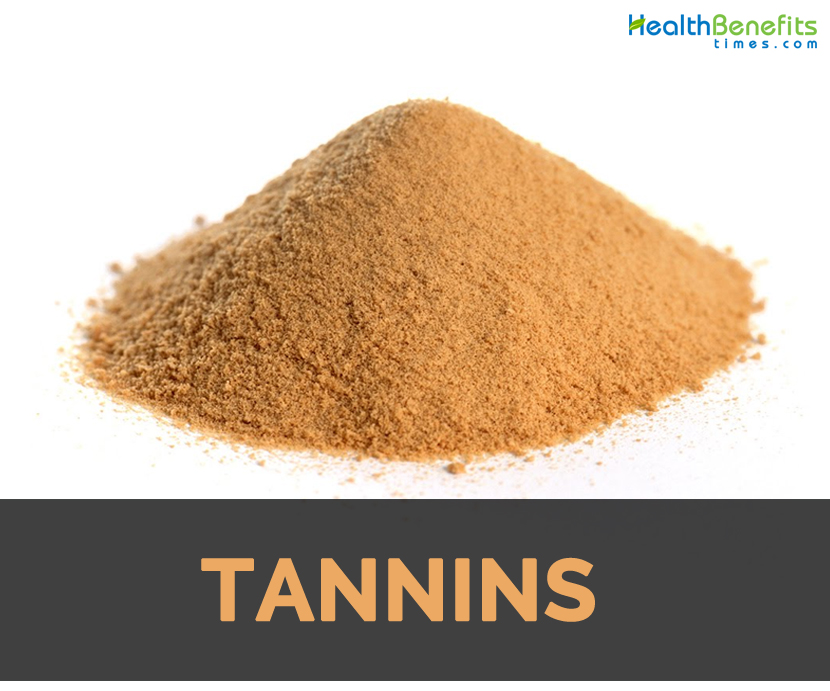 Tannins are soluble in water and interact with or form complexes with carbohydrates, polysaccharides, proteins, enzymes and bacterial cell membranes. It has high affinity for proline rich proteins salivary proline rich proteins. When restrained to mouth proteins, it imparts distinctively astringent taste sensation. Hydrolyzable tannins could be deteriorated by mild acids and bases for producing phenolic acids and carbohydrates or by hot water or enzymes. Contrarily, proanthocyanidins are non-hydrolyzable. It is present in coffee, tea and cocoa as well as broad beans. Tannins restrain iron absorption and in children in Egypt low intake of iron referring daily consumption of stewed beans are correlated with anemia. High intake of tea contributes to low iron status in people having marginal iron intakes.
Tannins are soluble in water and interact with or form complexes with carbohydrates, polysaccharides, proteins, enzymes and bacterial cell membranes. It has high affinity for proline rich proteins salivary proline rich proteins. When restrained to mouth proteins, it imparts distinctively astringent taste sensation. Hydrolyzable tannins could be deteriorated by mild acids and bases for producing phenolic acids and carbohydrates or by hot water or enzymes. Contrarily, proanthocyanidins are non-hydrolyzable. It is present in coffee, tea and cocoa as well as broad beans. Tannins restrain iron absorption and in children in Egypt low intake of iron referring daily consumption of stewed beans are correlated with anemia. High intake of tea contributes to low iron status in people having marginal iron intakes.
Tannins are also called tannoids refers a class of astringent or polyphenolic biomolecules which bind to or precipitate proteins or various other organic compounds including alkaloids or amino acids. The word tannin indicates to the use of oak or other bark in tanning animal hides into leather. Tannin word is applied to any large polyphenolic compound which contains sufficient hydroxyls or other suitable groups forming strong complexes with various macromolecules. Tannin compounds are distributed widely in many plant species where it plays a role in protection from predation or as pesticides and might regulate plant growth. Astringency from tannins causes dry and puckery feeling in mouth with consumption of unripened fruit, tea or red wine. Similarly, modification or destruction of tannins with time plays a crucial role in determining harvesting times. It has molecular weights which ranges from 500 to more than 3000 (gallic acid esters) and upto 20000 (proanthocyanidins). It is a group of pale-yellow to light-brown amorphous substances in form of powder, spongy mass or flakes which is widely distributed in plants or used chiefly in tanning leather, making ink, dyeing fabric and various medical applications. It occurs normally in roots, bark, wood, leaves and fruit of various plants particularly in bark of oak species and in myrobalan and sumac.
Tannins are used in clarification of beer and wine, as a constituent to lower viscosity of drilling mud for oil wells or in boiler water for preventing scale formation. Due to its astringent and styptic properties, tannins are used for treating pharyngitis, tonsillitis, skin eruptions and hemorrhoids. It is used as an antidote for alkaloidal, metallic and glycosidic poisons with which it form insoluble percipitates. Tannins are chemically classified into two main groups: condensed and hydrolysable. It is a polymer which consists of glycosides belonging to polyphenol family which are water soluble and are able to precipitate proteins.
Food Sources of Tannins
Cranberries, cocoa, chocolate, sorghum, berries, barley, rhubarb, nuts, squash and legumes such as beans and chickpeas, red wine and tea are the dietary sources that offer tannins.
Precautions
Tannins might give headaches to some people. Its side effects are vomiting, nausea, stomach irritation and liver damage.
References:
https://en.wikipedia.org/wiki/Tannin
https://vinepair.com/wine-101/guide-to-tannins/
https://www.britannica.com/science/tannin
https://www.silvateam.com/en/who-we-are/extracts-nature/all-about-tannins.htm
https://tea101.teabox.com/tannins-in-tea/
https://www.tabletwise.com/medicine/tannins
https://healthyeating.sfgate.com/tanninfree-diet-12415.html
https://www.acfchefs.org/download/documents/ccf/nutrition/2012/201208_lingering_tannins.pdf
https://www.livestrong.com/article/299312-foods-containing-tannic-acid/
